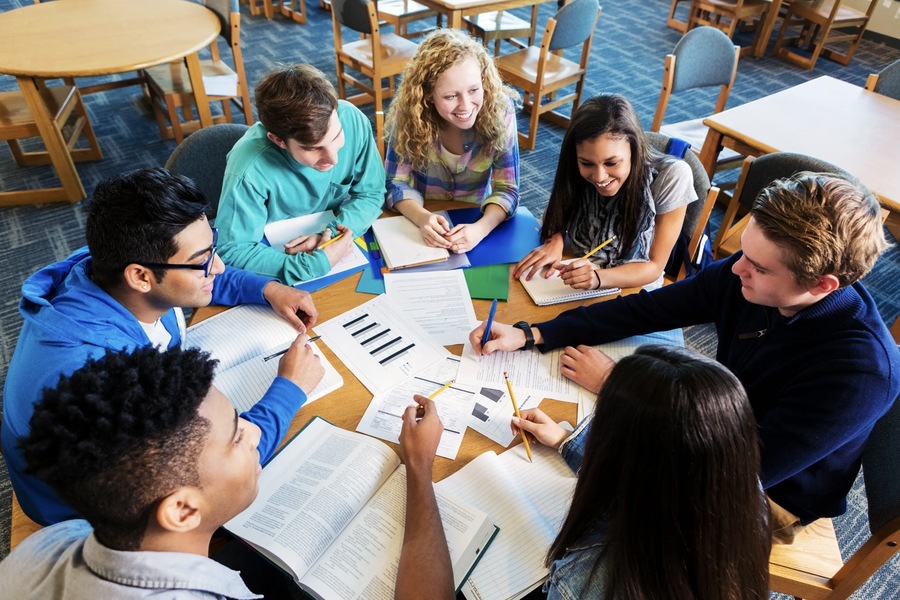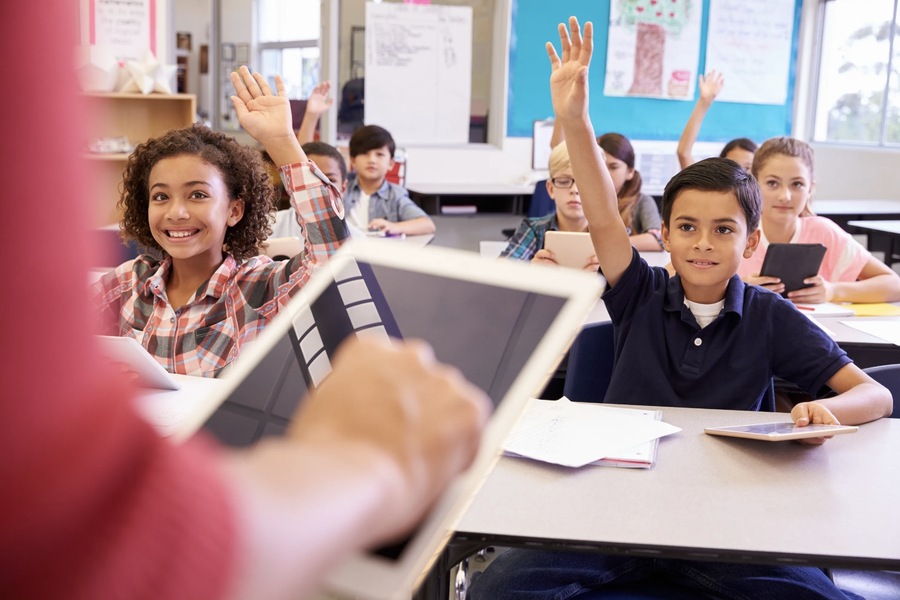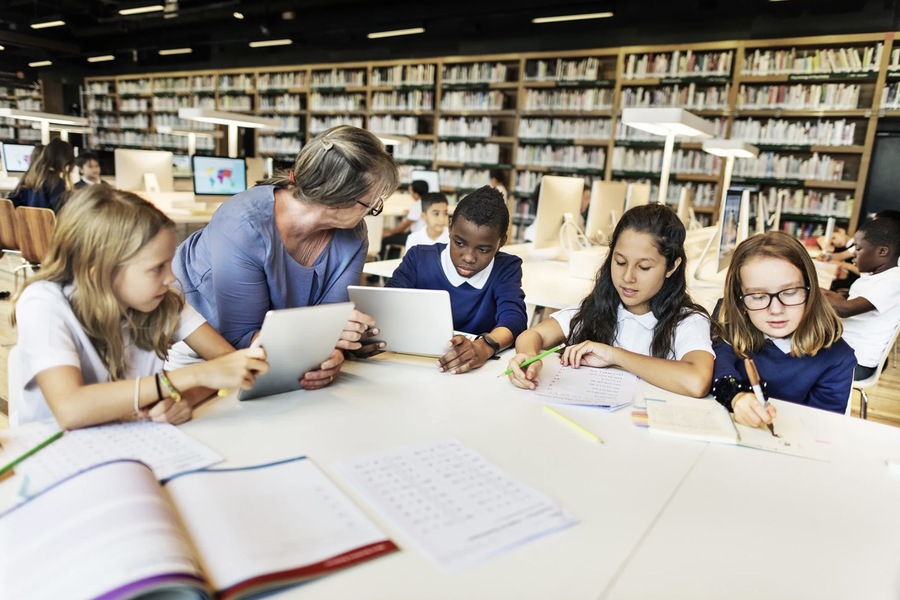The student-centered approach to education is a pedagogical philosophy that shifts the focus from the teacher to the student, placing students at the heart of the learning process. Rather than being passive recipients of information, students actively contribute to their learning experience by integrating their own knowledge, past experiences, education, and ideas. This holistic approach influences not only how they learn but also how they process and retain new information. Many schools in Ajman British curriculum adopt this approach, ensuring students are empowered to take control of their education and grow academically and personally.
Benefits of a Student-Centered Approach to Learning
Responsibility for Learning and Progress
One of the primary benefits of a student-centered approach is the ability of students to take ownership of their own learning journey. This empowerment fosters increased self-confidence, self-esteem, and awareness. Students develop the ability to make decisions and take responsibility for their choices, which contributes to their overall growth as independent learners.
Active Participation in the Learning Process
Unlike traditional learning models where students passively follow instructions, a student-centered approach encourages active participation at every stage. Students analyze tasks, propose solutions, hypothesize, and explore the causes of errors. This involvement deepens their understanding and helps them develop critical thinking skills that are applicable beyond the classroom.
Recognition of Individual Characteristics
Every student is unique, with their own strengths, weaknesses, and interests. A student-centered approach tailors the educational experience to the individual needs of each learner. By accounting for personal learning styles and preferences, this approach fosters a more engaging and effective learning environment.
Fostering Independence
Students are given the autonomy to set their own learning goals and objectives. They choose the methods that best suit their learning styles, encouraging self-reliance and promoting problem-solving skills. This sense of independence allows students to discover the methods that work best for them, furthering their personal and academic development.

Application of Prior Knowledge
In a student-centered classroom, students are encouraged to draw on their existing knowledge and skills across various subjects. This approach builds connections between new and old information, enhancing the retention and application of what they learn.
Collaboration in Joint Activities
While individual work is vital, a student-centered approach also emphasizes collaborative learning. Group work encourages students to exchange ideas, engage in critical discussions, and solve problems together, helping to develop social and communication skills.
Developmental Learning
The student-centered model promotes not just the acquisition of knowledge but also the development of cognitive skills, creativity, and diverse thinking. Students progress through the learning process by developing various forms of intelligence and adapting to new situations.
Freedom of Choice
Providing students with choices in their learning process empowers them to take responsibility for their decisions. Whether it is the selection of tasks or methods of assessment, this freedom fosters a deeper sense of commitment and accountability.
Openness to New Challenges
In a student-centered approach, teachers guide students through complex tasks that extend beyond the standard curriculum, encouraging intellectual curiosity and a passion for lifelong learning.
Alignment with Individual Learning Strategies
Educational tasks and strategies are designed to cater to each student’s individual learning style. This ensures that students not only absorb information but also develop skills tailored to their personal and academic needs.
Cultural Sensitivity and Inclusivity
The student-centered model considers students’ socio-cultural backgrounds, encouraging an educational experience that respects diversity. By acknowledging students’ lifestyles and values, it nurtures a more inclusive learning environment.
Emotional and Ethical Awareness
Teachers monitor not only academic progress but also students’ emotional well-being and ethical development. This holistic approach ensures that students grow as well-rounded individuals.
Redefinition of Teacher and Student Roles
In this model, the teacher’s role shifts from being a central authority to that of a facilitator, mentor, and advisor. Students are given more agency, while teachers guide them through the learning process, providing feedback and support when necessary.

Modern Teaching Methods that Empower Students
Choice Boards
A choice board is a graphic organizer that allows students to choose tasks related to a lesson topic. By selecting assignments that align with their interests or preferred learning styles, students take control of their educational journey and progress at a comfortable pace.
Self-Assessment Tools
Self-assessment helps students gauge their understanding of a topic. By using criteria set by the teacher, students reflect on their knowledge and evaluate their progress, fostering self-awareness and critical thinking.
Data Collection on Student Progress
Teachers collect and analyze data to identify areas where students struggle. This allows them to adjust teaching methods in real time, catering to each student’s individual needs and helping them overcome obstacles.
Computer-Assisted Learning
Technology plays a significant role in student-centered learning. Individual or group activities on computers allow students to engage with interactive content and enhance their understanding of educational material. For example, they may use computer simulations or complete mini-research projects, gaining practical experience in problem-solving.
Modular Learning
Modular training breaks the curriculum into smaller units or modules, enabling students to focus on specific areas of learning. This method allows for frequent self-checks and peer consultation, helping students identify gaps in their knowledge and actively work to fill them.
Differentiated Instruction
This method acknowledges that students have different learning needs. It adapts teaching techniques accordingly, some may use visual aids, while others rely on verbal or graphic presentations. Differentiated learning ensures that each student can engage with the material in a way that best suits their learning style.
Content Self-Assessment
Using rubrics or algorithms provided by the teacher, students can assess their own work, identifying strengths and areas for improvement. This process encourages reflection and personal growth in learning.
Global Examples of Student-Centered Curricula
International Baccalaureate (IB)
The IB program emphasizes academic achievement, critical thinking, and independent work skills. It encourages students to develop intellectual, personal, emotional, and social skills that prepare them for success in both university and life.
Finnish Education System
Finland’s education model is renowned for its focus on creating a motivating classroom environment. Early childhood education emphasizes play, interaction, and emotional development, while older students benefit from individualized learning that fosters creativity and critical thinking.
British Curriculum
This curriculum places a strong emphasis on flexibility, creativity, and critical thinking. Students are encouraged to think outside the box and apply their learning in practical ways, making them active participants in their educational experience.
IB Middle Years Programme (MYP)
Designed for students aged 11 to 16, the MYP promotes creative, critical, and reflective thinking. The program connects traditional academic learning with practical applications in the real world, helping students develop problem-solving skills.
IB Diploma Programme (DP)
The DP aims to prepare students aged 16 to 19 for university and life beyond school. It focuses on students’ intellectual, social, emotional, and physical well-being, preparing them to succeed in higher education and their chosen career paths.
IB Career Programme (CP)
Tailored for students in the final years of secondary school, the CP is a career-oriented program that equips students with the skills and knowledge necessary for a successful career. It combines academic learning with practical, real-world experiences.
Conclusion
A student-centered approach to education transforms the learning environment, placing the student at the core of the process. By fostering independence, critical thinking, and collaboration, this approach equips students with the skills needed for lifelong success. Through personalized learning strategies and modern technologies, students are empowered to take control of their education, making them not just learners but active contributors to their academic and personal growth.

Hiking addict, shiba-inu lover, record lover, Swiss design-head and New School grad. Acting at the crossroads of modernism and sustainability to craft an inspiring, compelling and authentic brand narrative.
